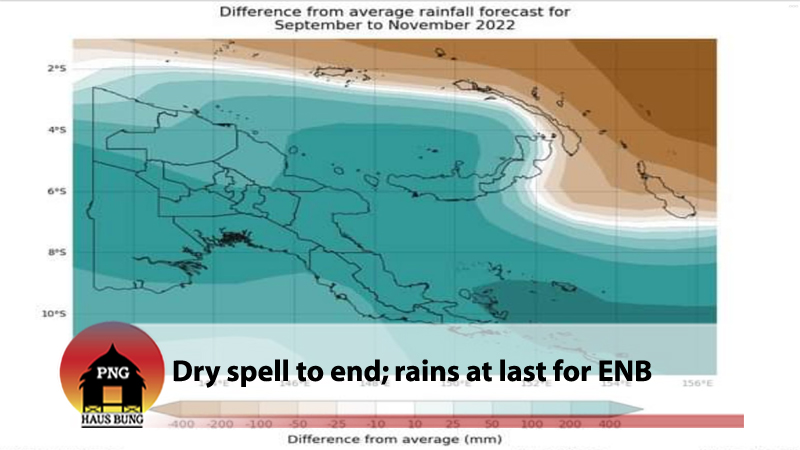Parts of Papua New Guinea will experience average rainfalls despite the dry and cold conditions faced around the country, including East New Britain Province that is going through a dry spell with no rains in the province for the past three (3) months.
Director National Weather Service Jimmy Gomoga said despite the few months of dry spell, there’s good news for ENB – they will not experience a drought in the province with some improvements expected in the weather pattern in the coming months.
“This improved situation will be felt in all the parts of the New Guinea Islands except for the southern part of Kavieng, New Ireland Province”, he said.
“We used an instrument called the Different Vegetation Index to check the wetness and dryness of the soil, and the result showed average condition with soil still having some moisture, therefore there will be no drought condition in ENB and other province that were at risk of possible drought.”
Papua New Guinea is in the middle of southern hemisphere winter and dry season has reached its peak over the country, however rainfall is expected because of the neutral condition.
There will be a situation of three months average rainfall mostly in the Western Province, Gulf Province, Central Province and the interior parts of East Sepik, that’s from the National Weather Service Director Mr Jimmy Gomoga.
Mr Gomoga also stated that the atmospheric wave is passing over the country thus bringing in cloudiness and rain over the country.
“The rain falls that are currently happening now will continue for another 3 months, September, October and November and this is because the Ocean Condition is at a neutral condition and our weather pattern is not leaning towards the El- Nino or La-Nina conditions”, Mr Gomoga clarifies.
With the country in the middle of dry season, we are also experiencing very cold nights and cold winds and this is because of the spring season down south.
“Very strong winds were experienced during the month of July and will continue through this month of August but will slow down towards the end of August and September”.
This is the transition of South East to North Westerly winds.

